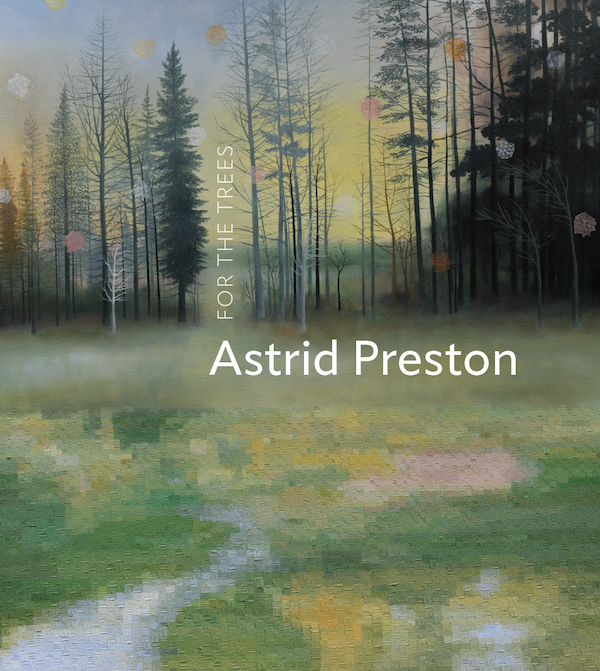Astrid Preston

FOR THE TREES
ASTRID PRESTON
Exhibition at Craig Krull Gallery
September 2 – October 14, 2023
Trees became my primary subject some forty-five years ago when I moved into a house that sits high on a hillside, its tall windows with views of tree-filled suburban streets and gardens, and in the background the shimmering city. Looking out of my studio windows I felt then, as now, as if I were in a tree house.
At the time I moved into the house, I had been creating abstract compositions of horizontal and vertical lines drawn with graphite and colored pencil. Inspired by my new environment, I began drawing just about everything in my surroundings. Eventually a new theme became dominant: the view of nature from my studio windows.
My primary impulse as an artist has always been to express my inner life. It is a process of searching, with scenes of nature, especially trees, very often the point of departure for my inner exploration.
Quite early I found that working directly from nature was too distracting, so I started taking photographs of things that spoke to me: a color or texture, a tree, a branch, or a patch of fog. After years of working with landscape imagery, I’ve always returned to the tree as the vital element in nature. Vertical, like an upright figure, it dominates the external landscape and my inner landscape too.
Recently my process has been to first do a thin, often monochrome, underpainting and then build up the composition from an accumulation of detail. Adding and removing trees, branches and so on, until the composition and colors convey what I am struggling to express, which is, generally, the feeling of the times and my reactions to them. As the paintings develop, my feelings, too, come into sharper focus. I look forward to the surprises they present to me. Some mystery is always welcome in a work, and the paintings I find most satisfying are the ones that have it. I do lots of painting and repainting, creating complexity and then working to simplify. The poetry in painting, for me, is usually in its simplicity. But paradoxically, this simplicity can be found in a density of detail and complex patterns.
One of my pleasures is painting a hillside of bare or colorful trees. It is a subject I have revisited many times over the years, employing a combination of textures and patterns to create the effect of a weaving that is at once complex and quieting. With each tree that I paint I feel as if I am planting it.
I am engaged in reimaging the natural world through photography, direct observation and memory. Artists are always of their time, but they inevitably deal with the history of art, even if the references are subtle, even invisible. One learns from the past. Painting, past or present, involves the same formal and abstract concerns—composition, color, texture and so on. I have discovered that by using nature imagery there is always new terrain to explore. For me it is to find unique ways of synthesizing the worlds of nature and abstraction.
Astrid Preston